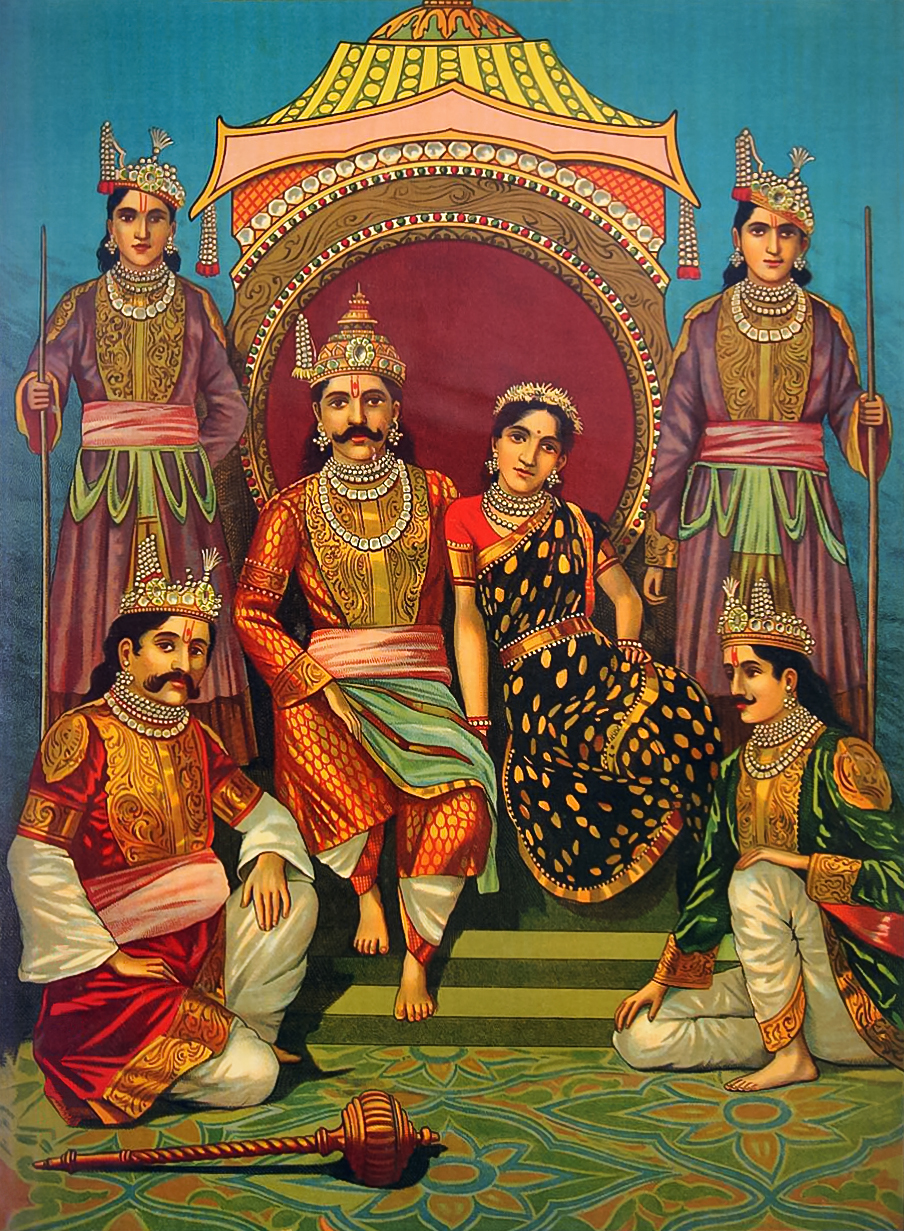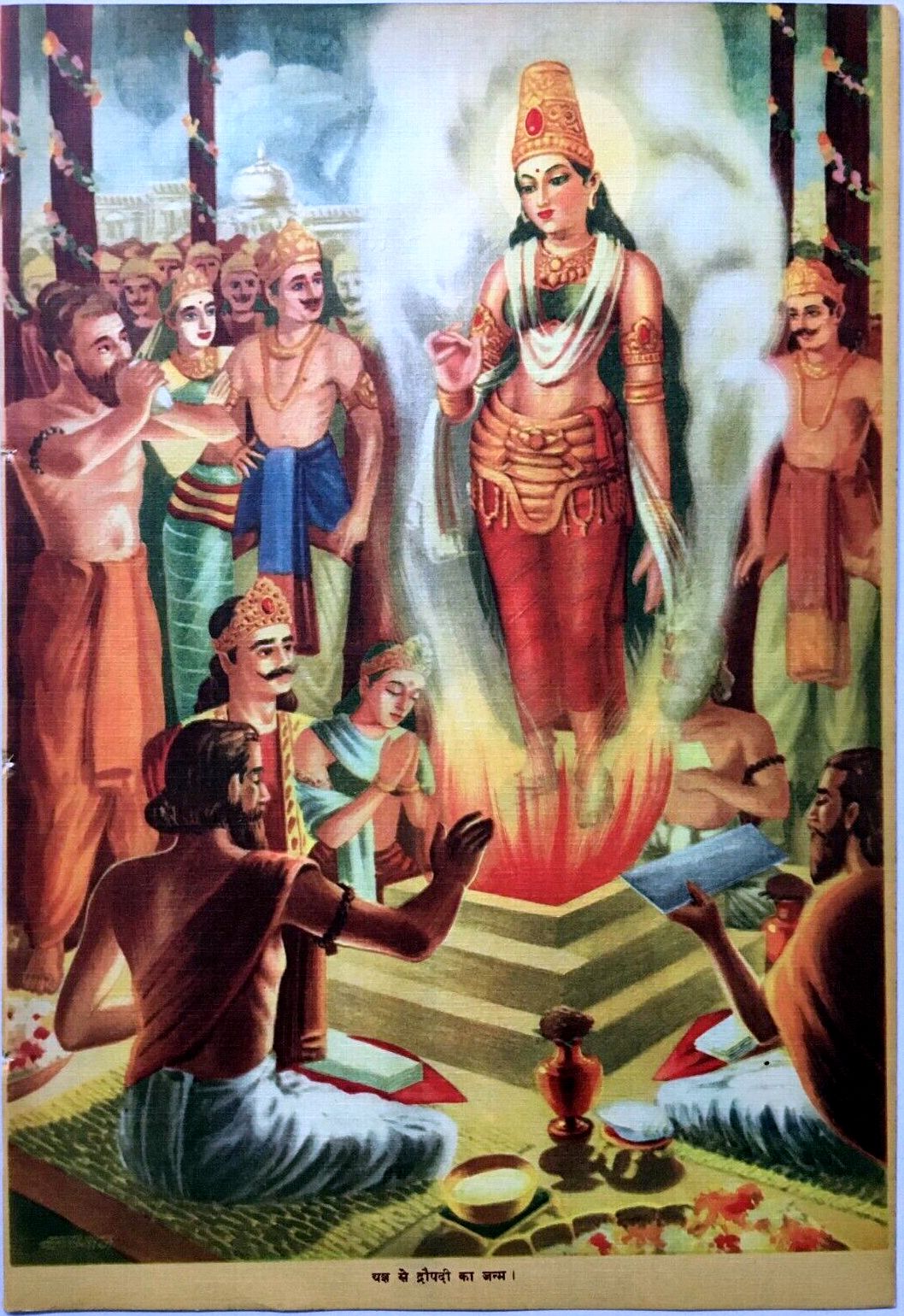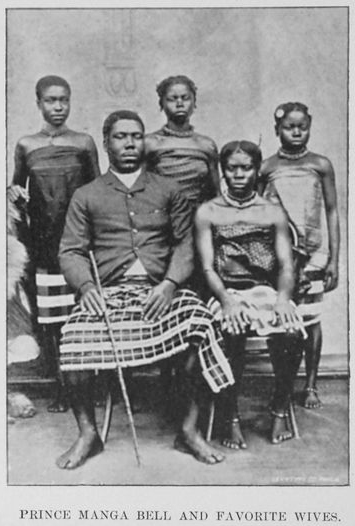|
Polyandry In India
Polyandry in India refers to the practice of polyandry, whereby a woman has two or more husbands at the same time, either historically on the Indian subcontinent or currently in the country of India. An early example can be found in the Hindu epic ''Mahabharata'', in which Draupadi, daughter of the king of Panchala, is married to five brothers. Polyandry was mainly prevalent in the Kinnaur Region, a part of Himachal in India which is close to the Tibet or currently the Indo-China border. As mentioned in the epic ''Mahabharata'', the Pandavas were banished from their kingdom for thirteen years and they spent the last year hiding in this hilly terrain of Kinnaur. Some Kinaauris claim that this practice has been inherited from the Pandavas, who they identify as their ancestors. The Garhwali people similarly identify their practice of polyandry with their descent from the Pandavas. Polyandry is also seen in South India among the Toda people, Todas tribes of Nilgiris (mountains), Ni ... [...More Info...] [...Related Items...] OR: [Wikipedia] [Google] [Baidu] |
Draupadi And Pandavas
Draupadi (), also referred to as Krishnā, Panchali and Yajnaseni, is the central heroine of the ancient Indian epic '' Mahabharata''. In the epic, she is the princess of Panchala Kingdom, who later becomes the empress of Kuru Kingdom. She is the common wife of the five Pandava brothers— Yudhishthira, Bhima, Arjuna, Nakula, and Sahadeva—and is renowned for her beauty, courage, devotion, intelligence and rhetorical skills. She is also described as ''sakhi''—a close friend—of the god Krishna. Draupadi, along with her twin brother Dhrishtadyumna, emerges fully grown from a ''yajna'' (fire sacrifice) organized by King Drupada of Panchala. Draupadi’s marriage is determined through a '' svayamvara'' (self-choice ceremony), structured as an archery contest of great difficulty. Arjuna succeeds in the challenge and wins her hand. However, their mother, Kunti, unknowingly instructs her sons to share whatever they had brought home, resulting in Draupadi becoming the ... [...More Info...] [...Related Items...] OR: [Wikipedia] [Google] [Baidu] |
Jaunsar-Bawar
Jaunsar-Bawar is a hilly region in Garhwal division of Uttarakhand, northern India. It is located in the north-west of Dehradun district, along the border with the state of Himachal Pradesh. Ethnically, Jaunsar-Bawar comprises two regions, inhabited by the two predominant groups: Jaunsar, the lower half, while the snow-clad upper region is called Bawar, which includes, the 'Kharamba peak' (). Geographically adjacent, they are not very different from each other. The Bawar lies in the upper regions of the area. They are a unique community because they have remained cut off from the external world for centuries, leading to the retention of their unique culture and traditions, which have attracted historians, anthropologist and studies in ethnopharmacology to this region for over a century. There is a significant cultural shift from other people of Garhwal, living close by. Jaunsar-Bawar region The Jaunsar-Bawar region, is a valley, spread over 1002 km2 and 398 villages(vi ... [...More Info...] [...Related Items...] OR: [Wikipedia] [Google] [Baidu] |
Toda Men Women 1871
Toda may refer to: *Toda people *Toda language * Toda Embroidery * Toda lattice * Toda field theory * Oscillator Toda * Toda (surname), a Japanese surname * "Toda" (song), a song by Alex Rose and Rauw Alejandro *Queen Toda of Navarre (fl. 885–970) *Toda, Saitama is a city located in Saitama Prefecture, Japan. , the city had an estimated population of 140,902 in 66,765 households and a population density of 7700 persons per km2. The total area of the city is . Geography Toda is located in the flat lowlan ..., Japan * Toda bracket * Toda fibration *Takeoff Distance Available, see Runway#Declared distances * Theatre of Digital Art, Dubai, UAE * Todaraisingh, or Toda, a municipality in Rajasthan, India See also * {{Disambiguation Language and nationality disambiguation pages ... [...More Info...] [...Related Items...] OR: [Wikipedia] [Google] [Baidu] |
Caste System In India
The caste system in India is the paradigmatic ethnographic instance of social classification based on castes. It has its origins in ancient India, and was transformed by various ruling elites in medieval, early-modern, and modern India, especially in the aftermath of the collapse of the Mughal Empire and the establishment of the British Raj. Beginning in ancient India, the caste system was originally centered around '' varna'', with ''Brahmins'' (priests) and, to a lesser extent, ''Kshatriyas'' (rulers and warriors) serving as the elite classes, followed by '' Vaishyas'' (traders, merchants, and farmers) and finally '' Shudras'' (labourers). Outside of this system are the oppressed, marginalised, and persecuted '' Dalits'' (also known as " Untouchables") and '' Adivasis'' (tribals). Over time, the system became increasingly rigid, and the emergence of '' jati'' led to further entrenchment, introducing thousands of new castes and sub-castes. With the arrival of Islamic rule, ... [...More Info...] [...Related Items...] OR: [Wikipedia] [Google] [Baidu] |
Paternity Test
DNA paternity testing uses DNA profiles to determine whether an individual is the biological parent of another individual. Paternity testing can be essential when the rights and duties of the father are in issue, and a child's paternity is in doubt. Tests can also determine the likelihood of someone being a biological grandparent. Though genetic testing is the most reliable standard, older methods also exist, including ABO blood group typing, analysis of various other proteins and enzymes, or using human leukocyte antigen antigens. The current paternity testing techniques are polymerase chain reaction (PCR) and restriction fragment length polymorphism (RFLP). Paternity testing can now also be performed while the woman is still pregnant from a blood draw. DNA testing is currently the most advanced and accurate technology to determine parentage. In a DNA paternity test, the result (called the 'probability of parentage) is 0% when the alleged parent is not biologically related to ... [...More Info...] [...Related Items...] OR: [Wikipedia] [Google] [Baidu] |
Himachal Pradesh
Himachal Pradesh (; Sanskrit: ''himācāl prādes;'' "Snow-laden Mountain Province") is a States and union territories of India, state in the northern part of India. Situated in the Western Himalayas, it is one of the thirteen Indian Himalayan Region, mountain states and is characterised by an extreme landscape featuring List of mountain peaks of Himachal Pradesh, several peaks and extensive river systems. Himachal Pradesh is the northernmost state of India and shares borders with the union territories of Jammu and Kashmir (union territory), Jammu and Kashmir and Ladakh to the north, and the states of Punjab (India), Punjab to the west, Haryana to the southwest, Uttarakhand to the southeast and a very narrow border with Uttar Pradesh to the south. The state also shares an international border to the east with the Tibet Autonomous Region in China. Himachal Pradesh is also known as ''Dev Bhoomi'', meaning 'Land of Gods' and ''Veer Bhoomi'' which means 'Land of the Brave'. The pre ... [...More Info...] [...Related Items...] OR: [Wikipedia] [Google] [Baidu] |
Polygamy
Polygamy (from Late Greek , "state of marriage to many spouses") is the practice of marriage, marrying multiple spouses. When a man is married to more than one wife at the same time, it is called polygyny. When a woman is married to more than one husband at the same time, it is called polyandry. In sociobiology and zoology, researchers use ''polygamy'' in a broad sense to mean any form of multiple mating. In contrast to polygamy, monogamy is marriage consisting of only two parties. Like "monogamy", the term "polygamy" is often used in a ''de facto'' sense, applied regardless of whether a State (polity), state recognizes the relationship.For the extent to which states can and do recognize potentially and actual polygamous forms as valid, see Conflict of marriage laws. In many countries, the law only recognises monogamous marriages (a person can only have one spouse, and bigamy is illegal), but adultery is not illegal, leading to a situation of ''de facto'' polygamy being allo ... [...More Info...] [...Related Items...] OR: [Wikipedia] [Google] [Baidu] |
Hindu Marriage Act
The Hindu Marriage Act (HMA) is an act of the Parliament of India enacted in 1955. Three other important acts were also enacted as part of the Hindu Code Bills during this time: the Hindu Succession Act (1956), the Hindu Minority and Guardianship Act (1956), and the Hindu Adoptions and Maintenance Act (1956). Purpose The main purpose of the act was to amend and codify the law relating to marriage among Hindus and others. Besides amending and codifying Shastrik Law, it also included separation and divorce, which also exist in Shastrik Law. This enactment brought uniformity of law for all sections of Hindus. In India, there are religion-specific civil codes that govern adherents of certain other religions separately. Applicability Section 2 of the Hindu Marriage Act, 1955 says: This Act applies to any person who is a Hindu by religion in any of its forms or developments, including a Virashaiva, a Lingayat or a follower of the Brahmo Samaj, Prarthana Samaj or Arya Samaj; ... [...More Info...] [...Related Items...] OR: [Wikipedia] [Google] [Baidu] |
Indian Penal Code
The Indian Penal Code (IPC) was the official criminal code of the Republic of India, inherited from British India after independence. It remained in force until it was repealed and replaced by the Bharatiya Nyaya Sanhita (BNS) in December 2023, which came into effect on July 1, 2024. It was a comprehensive code intended to cover all substantive aspects of criminal law. The Code was drafted on the recommendations of the first Law Commission of India established in 1834 under the Charter Act 1833 under the chairmanship of Thomas Babington Macaulay. It came into force in the subcontinent during the British rule in 1862. However, it did not apply automatically in the Princely states, which had their own courts and legal systems until the 1940s. While in force, the IPC was amended several times and was supplemented by other criminal provisions. Despite promulgation of the BNS, litigation for all relevant offences committed before 1 July 2024 will continue to be registered under ... [...More Info...] [...Related Items...] OR: [Wikipedia] [Google] [Baidu] |
The Times Of India
''The Times of India'' (''TOI'') is an Indian English-language daily newspaper and digital news media owned and managed by the Times Group. It is the List of newspapers in India by circulation, third-largest newspaper in India by circulation and List of newspapers by circulation, largest selling English-language daily in the world. It is the oldest English-language newspaper in India, and the second-oldest Indian newspaper still in circulation, with its first edition published in 1838. It is nicknamed as "The Old Lady of Bori Bunder", and is a newspaper of record. Near the beginning of the 20th century, Lord Curzon, the Viceroy of India, called ''TOI'' "the leading paper in Asia". In 1991, the BBC ranked ''TOI'' among the world's six best newspapers. It is owned and published by Bennett, Coleman & Co. Ltd. (BCCL), which is owned by the Sahu Jain family. In the Brand Trust Report India study 2019, ''TOI'' was rated as the most trusted English newspaper in India. In a 2021 surve ... [...More Info...] [...Related Items...] OR: [Wikipedia] [Google] [Baidu] |
Punjab, India
Punjab () is a States and union territories of India, state in northwestern India. Forming part of the larger Punjab, Punjab region of the Indian subcontinent, the state is bordered by the States and union territories of India, Indian states of Himachal Pradesh to the north and northeast, Haryana to the south and southeast, and Rajasthan to the southwest; by the Indian union territory, union territories of Jammu and Kashmir (union territory), Jammu and Kashmir to the north and Chandigarh to the east. To the west, it shares an international border with the identically named Pakistani province of Punjab, Pakistan, Punjab, and as such is sometimes referred to as East Punjab or Indian Punjab for disambiguation purposes. The state covers an area of 50,362 square kilometres (19,445 square miles), which is 1.53% of India's total geographical area, making it List of states and union territories of India by area, the 19th-largest Indian state by area out of 28 Indian states (20th larges ... [...More Info...] [...Related Items...] OR: [Wikipedia] [Google] [Baidu] |
Malwa (Punjab)
Malwa () is a geographical region in the south of Punjab state in India. It is located between south of the Sutlej river, north of the Ghaggar river, east of Pakistan, and west of the Sivalik Hills. Etymology The name of the region is derived from the '' Malavas'', an ancient Indic tribe which inhabited the area in antiquity. History Early history The city of Ferozepur, located in the Malwa region, was founded sometime in the latter half of the 14th century by Firuz Shah Tughlaq the third of the Delhi Sultanate. Later-on during the Mughal Empire, Ferozepur acted as the capital of the Multan subah (province) according to the ''Ain-i-Akbari''. With the shifting course of the Sutlej River, the region fell into decline, as the river which formerly provided a means of sustenance and fertility to the land became destructive and transformed the landscape of Malwa into mounds and deserts. Malwa had essentially taken on the appearance of a desert by the early 16th century ... [...More Info...] [...Related Items...] OR: [Wikipedia] [Google] [Baidu] |






